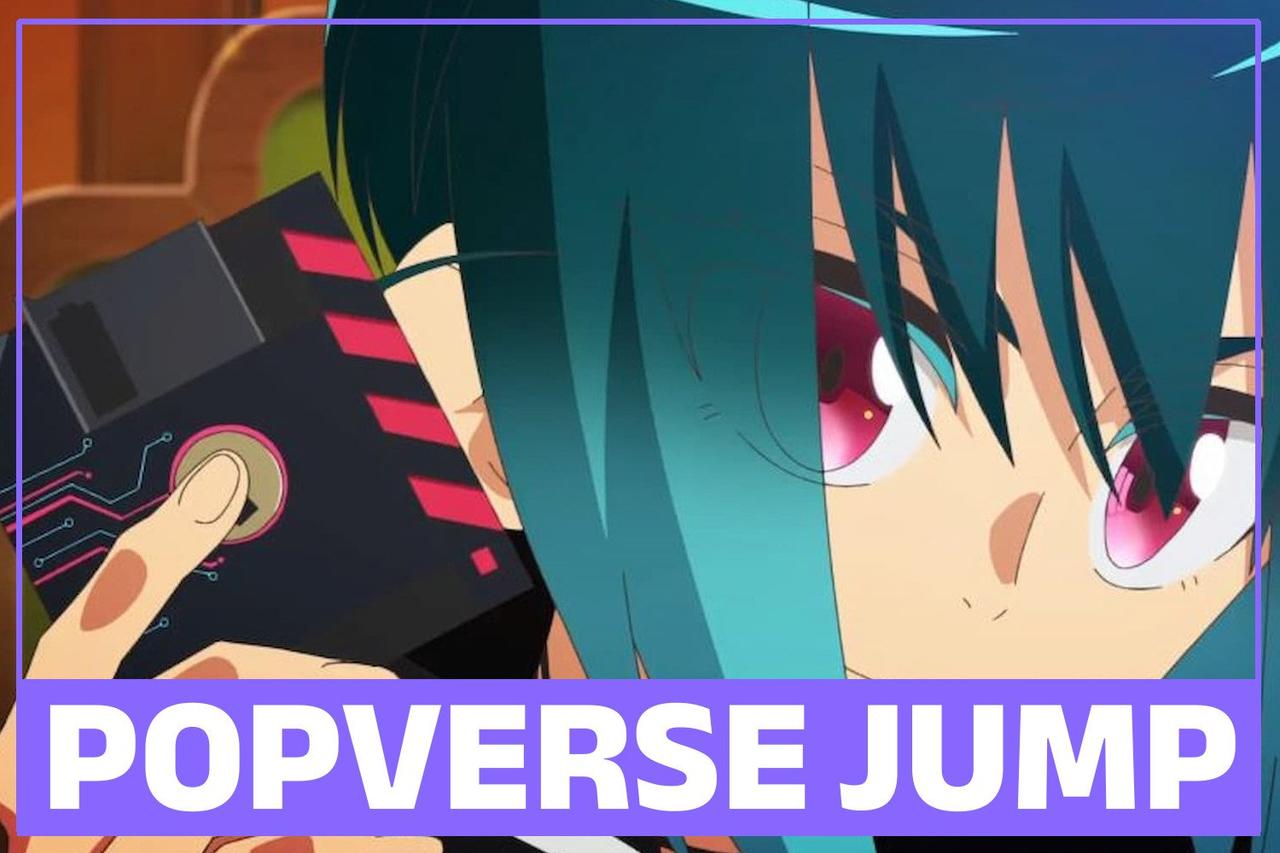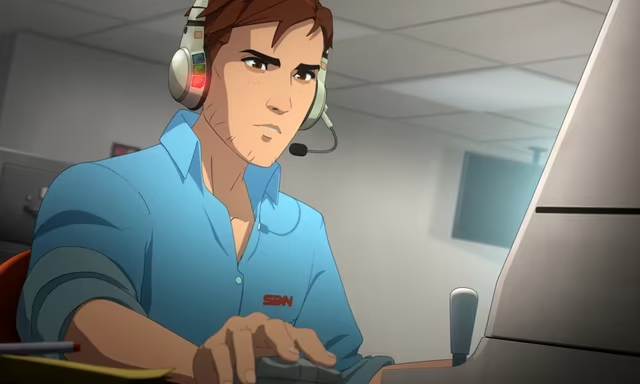If you click on a link and make a purchase we may receive a small commission. Read our editorial policy.
How AI translations of manga continues the 'enshitification' of the medium, and why Japanese publishers are "less precious" about it [Popverse Jump]
Translating a manga from Japanese to English isn't a straightforward process, which is why AI will always be terrible at it.

Enjoy this complimentary article, previously available exclusively for Popverse members. If you like what you see, consider becoming a Popverse member.
We’re all tired of hearing about AI and its constant encroachment on the things we love, but we also can’t seem to escape hearing about it every time it rears its ugly head. The manga and anime industries seem to be particularly susceptible to this; earlier this year Orange Inc. made headlines by offering manga that was translated by GenAI to questionable results. Then at the start of a particularly packed Summer 2025 anime season, Crunchyroll rolled out subtitles for Necronomico and the Cosmic Horror Show that were so obviously a product of ChatGPT that the company had to put out a statement about it.
With the focus on GenAI clearly not going away as companies seek new ways to push up profits, I wanted to find out exactly what is happening in the manga localization industry. So, I spoke to several people who have been working to translate and localize manga. With decades of experience in the industry between them, they shared some interesting insight into how AI is currently being used in localization for anime and manga and what fans can expect to see in the future.
“AI and machine translation, like any technology, is a tool,” explained Katrina Leonoudakis, who has been working in Japanese to English translation for a decade now. She has worked on dozens of volumes of manga and popular video game series like Persona and Yakuza. “Like any tool, we need to know when and where it’s appropriate to use. A jackhammer is great for breaking up concrete, but you wouldn’t use it to nail a painting to the wall… The word ‘AI’ is confusing, too, as companies love slapping the word onto things to make it sound fancy… Like other large-language models, AI in translation uses a large corpus of translated texts to search for the best possible match and then generates a good-sounding translation from that match. It’s making a best guess.”

No one that I spoke to seemed shocked to see companies trying to use GenAI to cut corners in manga localization.
“Sadly, it’s not all that surprising,” said one translator who wished to remain anonymous to avoid backlash from the industry. “At the end of the day, corporations want to make money and they will do whatever they think will make them the most money. AI is given inflated levels of undeserved hype and corporations are eager to take the bait.”
“’Doing more for cheaper’ is a lure for any company,” agreed Zack Davisson, whose credits in translating manga date back decades. “At the end of the day, companies exist to make money. If they aren’t doing that, they go out of business… Companies will see it as positive if they make more money.”
While most of the translators I spoke to were skeptical that AI would make a positive contribution to the industry, Davisson offered one bright spot.
“It’s also possible that we see more releases of series that wouldn’t be financially viable given the cost of a full human translation.”
Even that comes at a cost, however, with everyone I spoke to expressing concerns that quality would suffer as a result of GenAI being used in manga translation.
“I think the danger is a continuing lowering of the bar,” Davisson explained. “It’s not dissimilar to some eras of fan translation, where readers were happy to accept lower quality simply to have access. And the more readers accept the lowering of the bar and not demanding quality, the lower the quality will go.”
This process, called “enshitification” by one of the other translators I spoke to, is a danger in any industry, but manga localization is particularly vulnerable.
“Manga is inherently a visual art and a unique form of storytelling,” Leonoudakis told me. “The way characters are drawn and positioned within panels, the panel layouts, the movement of characters between panels, all of these creative elements play a role in the storytelling. So, too, does the way text is broken up between bubbles, where text is placed, the decision to put text in a box or lay it alongside a drawing, et cetera. AI can’t understand this – it just sees the text. Because of that, it’s missing a huge amount of context for how the text should be interpreted.”

“This is especially dangerous when you’re translating Japanese to English,” Leonoudakis continued, highlighting how Japanese is considered a “high-context language” compared to English. “For example, take the English sentence ‘I have a cat.’ Without knowing anything about the speaker or what’s going on, you know who has the cat (the speaker), and how many cats they have (one cat). In Japanese, you would say 猫飼ってます (neko kattemasu), which literally translated means, ‘cat have.’ You don’t know who has the cat, and because nouns can be singular or plural, you don’t know how many cats they have.”
So, an AI translation of neko kattemasu might simply be “I have a cat,” even when it could be referencing someone the character is pointing to who is surrounded by cats simply because of what the text said. It also loses the thing that makes the characters unique.
“With AI translation, you also completely lose the character’s voice,” explained another translator I spoke to. “It doesn’t know how a young person sounds compared to an old person; it just replaces words with other words, resulting in characters sounding wooden. A good human translator can match the character’s voice to the original and keep it consistent.”
But that is why so many companies are hiring people to “fix” the mistakes of an AI-generated manga, right?
Aside from the fact that the fiasco with Crunchyroll’s stream of Necronomico and the Cosmic Horror Show, which included the phrase “ChatGPT said” in the German subtitles of the show, suggests this human oversight isn’t happening consistently, these positions often require translators to redo large portions of the text and take just as long to translate – while offering significantly less money.
“Unfortunately, many companies are completely fine with exploiting already undervalued and underpaid translators by only offering [machine translation post-editing] positions, said Leonoudakis. “Professionals and experts will rarely take these jobs, which leads to less-experienced (or more desperate) translators taking the work, often resulting in lower quality work.”

This gives us translations that are worse or similar to those offered by fan-translated manga, which is a problem because companies are asking people to pay more money for a worse product. Orange Inc., for example, is charging $4.99 per volume of Dealing with Mikadono Sisters Is a Breeze, even though the series has translation and writing issues on the opening pages. But these issues are unlikely to matter to the owners of the original manga.
“Both Viz and Kadakowa are Japanese companies, meaning they are less precious about the English translation,” Davisson told me. “To them, it is a secondary, and probably even tertiary product. The Japanese original is the one that is important. That is the work of art. They care less about the various translated versions. If they can make more product and make more money using AI, then I can see them going that route.”
“Manga is supposed to be entertaining,” said a final translator, speaking anonymously to me. “It’s fun, exciting, emotional. Manga is fantastic and AI and machine translation sucks the very soul out of it. It’s a big f-you to the mangaka who put all that work into the art, text, and story. ‘We don’t respect your work to treat it with respect. It’s just a commodity to us and we want the most profit possible.’
Ultimately, the onus to preserve manga localization doesn’t fall to the translators (who are doing the best they can in an undervalued and underpaid field) or companies (who will always try to save as much money as possible, even at the expense of their product); instead, it is fans who have to demand better. “The true decider of this issue will be readers, Davisson warned. “The only metric that actually matters to companies is ‘What did you buy?’ Readers can raise a fuss on the internet and decry AI as loudly as possible, but the only voice companies will listen to is that secret, silent voice of what those readers actually purchase. If they are buying AI translations, then companies will keep making them.”
Want to know what's coming up next in pop culture? Check out Popverse's guides to:
Follow Popverse for upcoming event coverage and news
Find out how we conduct our review by reading our review policy
Let Popverse be your tour guide through the wilderness of pop culture
Sign in and let us help you find your new favorite thing.














Comments
Want to join the discussion? Please activate your account first.
Visit Reedpop ID if you need to resend the confirmation email.